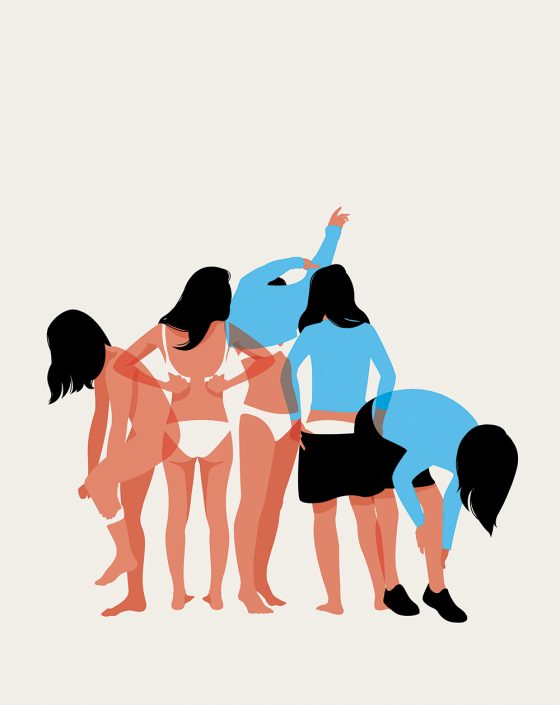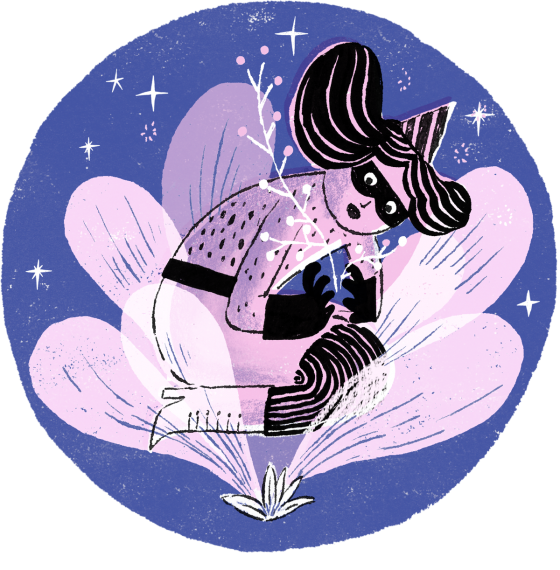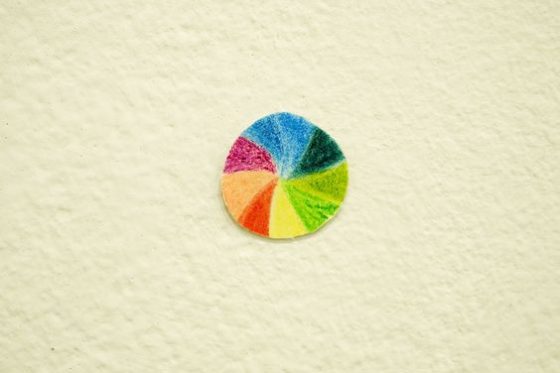
When I was younger, I didn’t know how to pick out clothes for myself. I didn’t know where to begin. I had to march to the fitting room, try everything (maybe even twice) before I could make a decision. Even then, I had to ask someone else what they thought of it. I’d rely heavily on their opinion for that final push – yay or nay? It was nail-bitingly hard because picking out an outfit was more than just choosing which pants that would go with a shirt or a blouse. It was (at least what I thought it was at the time) also a statement of who I was and what I represented to the world.
I didn’t know who I was.
And so I didn’t know what to wear.
Throughout my teenage years, I wore a lot of hand-me-downs. These were clothes that my cousins no longer wore, but were in good condition and hence were passed down to us. I didn’t think too much about style back then – I wore what fit me, and I didn’t feel the need to go out and spend money on clothes because hey, I had them. My clothes were picked because they were already there – not because I picked them myself. And because of this, I was terrified of making the wrong decision when it came to buying my own. Unlike hand-me-downs or second hand clothes, I would have to fork money over for clothes, and that’s not even including the mental anguish that came from the sheer availability of choice.
You might remember that as a teenager, I had a bad case of cystic acne and wore braces. I felt like a badly melted version of Terminator. One person even called me Robocop, and others would ask (hurtfully) what was wrong with my skin. It took me many, many years before I started to gain confidence in my outlook, and to feel comfortable at looking at myself in the mirror. And even then, the awkwardness when it came to dressing myself was something I needed to overcome.
Drawing parallels
When it came to drawing, the problems I encountered were very familiar. I found it hard to nail down just one style or technique, and so I experimented a lot in between. Big thick lines versus small thin ones. I’d change mediums many times and tried so hard to like watercolour but gave up because it was hard to control (I know that’s the beauty of watercolours, but still). I went through periods where I experimented with collage, vector and brush and ink; and found out which worked for me.
How did I the problem with my wardrobe? It took some time, but I managed to navigate the choppy waters of being presentable by asking for tips from friends who’s dressing style I liked. I looked up references on how to dress better. I took the time to really look at myself in the mirror when I tried on clothes, identified how it made me feel and why; expanding my palette to include colours and prints and slowly taking more risks when it came to picking out pieces. Before, the insides of my wardrobe were swathed in dark colours (I still have this habit), because it was easy. I didn’t want to draw too much attention to myself, and I was comfortable being in the background. What I came to realise after I studying more about fashion and style was this: there is a formula to all this madness; just like how I learned which drawing style I liked best.
I found key things that worked for my body type: small prints, interesting necklines, details and hems. No garters at the waist, or fabrics that cling to the skin. No too-short skirts (I have varicose veins, ugh), or wide ones that would gather too much attention to my hips either. By creating a guideline of sorts, it made finding an outfit surprisingly simpler – I knew what would look good on me without having to try it on. Shopping became a fun exercise in seeing if I was accurate in picking out pieces that would play to my strengths while avoiding pieces that would exaggerate areas I wanted to play down. I’m happy when I’m comfortable, and to me, that’s a big part of being confident. Another example would be how some contestants on American Idol who has a great voice but chose the wrong song. We all have our limits (for now). We’re good at specific things. We accentuate the good and hide the bad. Why shouldn’t it apply to other things in our life?
The formula
As for drawing, I knew that I was good at brush and ink, and that I loved teaching more than I did dealing with clients. I love drawing on smooth paper and hate the sound that calligraphy pen nibs make when scratched on paper. Just like how we would flip at old photograph albums and cringe at what we wore before, the same thing happens when it comes to flipping through your old sketchbooks. Thank goodness we are able to grow and learn from our experiences!
In coming up with the syllabus for my upcoming class on personal style (I can’t fit everything into a book, unfortunately), the one thing I keep coming back to is that learning about your personal style is a process, one that is uniquely personal. Can we hurry or hasten the process? Yes we can, to some extent. Should we, though? It depends. I fully understand how some might take longer than others to figure out what style works best for them, whether it’s fashion, drawing, cooking, or even communicating. Some might have hit a snag, or others have allowed it to set them back professionally.
If time is no object, what usually works is this: having keen observation in learning and figuring out what works best for you. It’s very easy to forget that what comes naturally to you may not be the case with others (just like how it took me many years to dress myself well). So my advice is to talk to the people in your life: friends, family, mentors or colleagues who can help you gauge your personal formula, so that you can play to your strengths. Getting some help can often make you see clearer, make mistakes faster, and thus get quicker feedback. Pretty soon you’ll be able to decode the rest of life’s mysteries. Or some of it at the very least!
Share with me – what personal formula have you worked out that has served you well so far?
Also: If you need some help figuring out your personal artistic style (not the fashion kind!), here’s a free email course I created.











